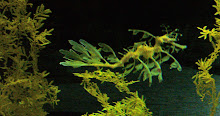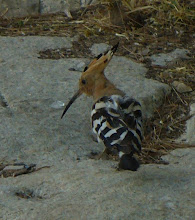British birds bore me rigid. I can offer no justification or excuse for my total lack of enthusiasm for them- I just cannot get excited about a small brown winged creature flitting between the balding branches in the shrubbery. Overseas, it is a completely different story- I have no sooner landed in foreign climes than been transformed into the most insufferably obsessive twitcher. I cannot be alone in this as almost all countries seem to sell laminated brochures of their common wildlife –especially birds- for the interested tourist.
This month, I am in Israel and, as on previous visits, I am getting good use out of my laminated bird-leaflet: in this case, “Birds of Israel- A pocket Guide to common species”. The “Nature in Israel” people have clearly gone one step further than many of their foreign counterparts in selling, not only general guides to wildlife and bird leaflets, but specific pocket guides to trees and shrubs, wildflowers and mammals, all of which I am working through.
The wildlife in this region is a curious mix of European, African and Asiatic species, with a few endemic species, thrown in, as if for good measure. Turkey is famous for its birdlife because it lies at the intersection of continents. Israel has a similarly favourable location and some wonderfully diverse landscapes; the lush north of the country invites very different species from the barren sands of the Negev Desert to the south. Of course, many of the birds here would be familiar to any Briton – great tits, house sparrows, goldfinches, chaffinches and so forth- even greenfinches, plovers and barn owls, but there are other more exotic creatures, too. The spectacled bulbul- a black, white and grey bird, with a striking yellow patch under its tail is a familiar garden resident. Hoopoes, which theoretically visit Britain from time to time, actually do inhabit Israel all the time.
Pigeon fanciers in Britain talk about “ash red” pigeons- really a brown variant of the better known grey/blue racing pigeon. However, in Israel, the feral pigeons really are red. Or, to be more accurate, the urban pigeons familiar across Europe, are largely replaced in cities by their similar but strikingly red-tinged cousin- Streptopelia senegalensis- the Laughing dove, which, as its name suggests, is also an African species.
Of all these birds, the one of greatest interest to me is the one I have been unable to find- a beautiful medium sized green animal with a vivid blue face and broad, sharp black stripe across its eyes. My guide calls it Merops orientalis , or the “Little Green Bee Eater”, which somehow implies that there is only one in the country (perhaps why it has proven so elusive, so far). So, my aim this month is to track down the Little Green Bee Eater, wherever he is hiding, and photograph him- if not for posterity, at least to show my British bird-watching friends- a creature that is most certainly not brown nor drab- now that is a bird worth getting excited about.
- Victoria Neblik, Jerusalem, Israel, Oct 2009. (c) Victoria Neblik 2009.
-This post is an extract from my forthcoming book- "Weirdbeautiful". The book will combine my pick of extracts from this blog with exclusive, unpublished wildlife photos, diary articles, interviews, quotations from famous scientists and other short science-themed articles. When the book is released, I will make an announcement on this blog. To join the mailing list for advanced notice of release, e mail: neblik@yahoo.co.uk with the subject line "Weirdbeautiful book mailing list". Thank you for reading.
Subscribe to:
Post Comments (Atom)









No comments:
Post a Comment